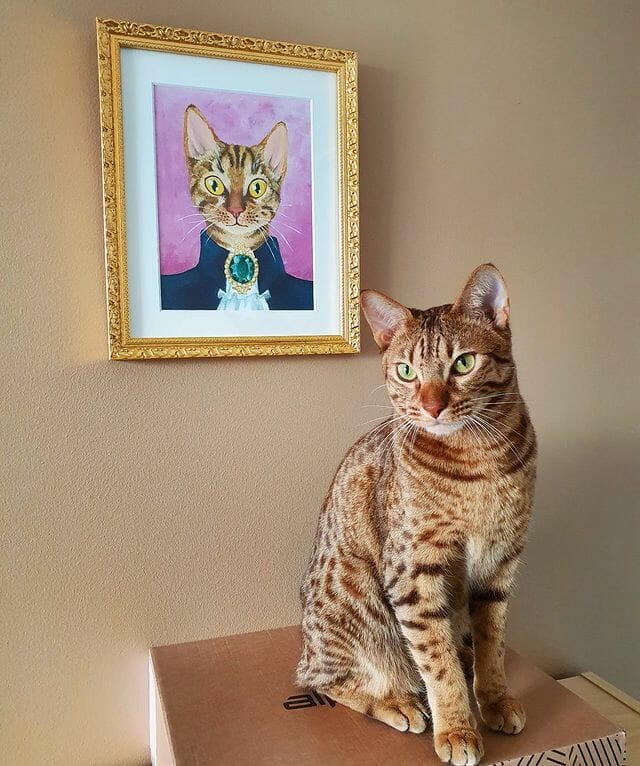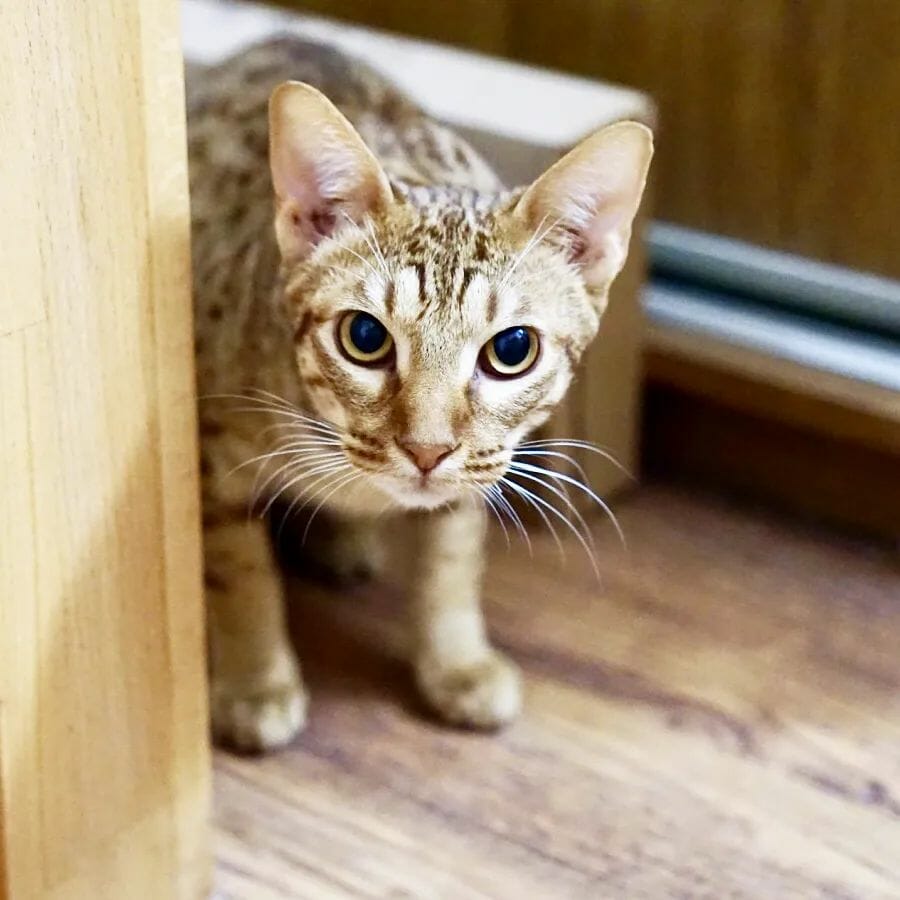How Big Do Ocicats Get: What You Need to Know About the Growth of Ocicats
Ocicats are medium to large-sized cat breeds. They can weigh anywhere from 7 to 15 pounds (3 to 7 kg), with males typically larger than females, according to Purina. They are a muscular and athletic breed, with long legs and a sleek, spotted coat that gives them a rugged appearance. Ocicats usually reach their full size and weight by the time they are 1 to 2 years old.


Table of Contents
Growth Stages of Ocicat
Newborn
Newborn Ocicat kittens weigh around 3.5 to 4.5 ounces and are blind and deaf. They rely completely on their mother for warmth, nourishment, and stimulation. During this stage, they spend most of their time sleeping and eating, and their eyes and ears start to open between 5 to 10 days of age.
First Two Weeks
At three to four weeks old, Ocicat kittens are usually weaned from their mother’s milk and start eating solid food. They are becoming more active and curious about their environment and may begin to play with toys and other kittens. Their eyes and ears are fully open, and they are starting to develop their coordination and balance. At this stage, their weight can range from around 12 to 18 ounces (340 to 510 grams).
Three to Four Weeks
During the first two weeks, ocicat kittens are born with closed eyes and ears folded. They rely on their sense of smell and touch to find their mother and nurse. Their primary activity is sleeping; they need plenty of rest to grow and develop.
At this stage, the kittens’ mother keeps them clean and warm. She will stimulate them to eliminate waste and keep them close to her for warmth.
During this stage, it’s important to provide the mother cat with plenty of high-quality food and clean water to support her milk production and keep her healthy. It’s also important to keep the area where the kittens and their mother live clean and comfortable.
Five to Six Weeks
During the fifth and sixth weeks, ocicat kittens become more active and curious about the world around them. They will start to play with each other and with toys, using their sharp claws and teeth to explore and learn. They will also learn social skills by interacting with their littermates, such as communicating through body language and vocalizations.
They will start to wean off their mother’s milk and transition to solid food at this age. They will also begin using a litter box and learn to groom themselves. By the end of the sixth week, they should be fully weaned and starting to resemble miniature versions of adult Ocicats.
Seven to Eight Weeks
The Ocicat kittens should be fully weaned and eat solid food at seven to eight weeks. They will also become more active and playful as their coordination improves. This is an important stage for socialization and interaction with humans and other pets.
At this stage, the kittens should also start using the litter box consistently. It is also a good time to introduce them to grooming and nail trimming. By eight weeks, the kittens should have received their first vaccinations and are ready to go to their new homes.
Nine to Twelve Weeks


At this stage, Ocicat kittens are becoming more independent and confident. They will start playing with each other, exploring their surroundings, eating solid food, and becoming litter box trained.
By the end of this stage, they should weigh around 2 to 4 pounds and have their full set of teeth. They will be ready to go to their new homes and be fully weaned from their mother. It’s important to ensure they receive their vaccinations and continue to receive proper care and socialization.
Four to Six Months
At four to six months, Ocicats are still considered kittens but have entered adolescence. They will continue to grow and develop during this time, and their playful and energetic personalities will become even more apparent. They may also become more independent and curious and may start to challenge their boundaries and test their limits.
It is important to provide them with plenty of stimulation and outlets for their energy, such as toys, climbing structures, and interactive playtime with their owners. Additionally, they should be fed high-quality kitten food to support their growth and development. Regular veterinary check-ups and vaccinations are also important during this stage of life.
Factors Affecting the Growth of Ocicat
Ocicats are domestic cats known for their rugged appearance and playful personalities. Like all living organisms, the growth and development of Ocicats are influenced by a variety of factors. Some of the factors that affect the growth of Ocicats are:
- Genetics: Genetics plays a significant role in the growth of Ocicats. The breeders carefully select the parents to ensure the offspring inherit the desirable traits, including body size and growth rate.
- Nutrition: A balanced and nutritious diet is essential for the healthy growth of Ocicats. A high-quality diet with the right balance of proteins, fats, and carbohydrates is essential for their overall health and development.
- Environment: The environment in which an Ocicat is raised can affect its growth. A clean and spacious living area with plenty of toys and opportunities for exercise can promote healthy growth and development.
- Health: Ocicats that are healthy and free from diseases and parasites are more likely to grow and develop properly. Regular veterinary check-ups and vaccinations can help prevent diseases and detect health issues early.
- Age: The age of an Ocicat also plays a role in its growth. Kittens grow rapidly in the first few months of life and continue to grow until they reach adulthood at around one year of age. After this point, their growth rate slows down significantly.
